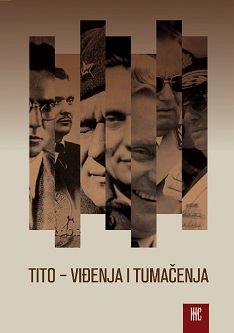Titova podoba v slovenskih učbenikih
The Image of Tito in Slovenian Textbooks
Author(s): Aleš Gabrič
Subject(s): Political history, History of Education, State/Government and Education, History of Communism, Sociology of Education
Published by: Institut za noviju istoriju Srbije
Keywords: Tito; the Communist rule; Slovenia; textbooks; students; education; Slovenia;
Summary/Abstract: One of the requirements set forth by the „cultural opposition" to the Communist regime in the 1980s was the de-idealisation present within the school system and the change of curricula set for the humanities and social-science subjects, which were too uncritical in their praise of Josip Broz Tito and the Communist rule period. The change that followed this requirement is also evident through a comparison of 20th century history textbooks. Among other things, the representation of Josip Broz Tito and his era in Slovenian textbooks underwent a significant change. In textbooks published during the Communist rule, Tito and the Communists were described in glorifying tones, while the crimes they committed after taking the power were left unmentioned and became taboo. The role of the Communist Party and Tito was also over-emphasised in relation to earlier periods, when neither actually played any significant political part As a result, most Slovenes believed that the Communist Party became the most important and influential political party in the Slovenian territory as early as the inter-war period when, in actual fact, it was at that time a peripheral and insignificant illegal party. In relation to the time after WWII, Tito was depicted as a great leader chosen by the people. Tito’s depiction as a great leader achieved its highest levels in textbooks published in the years following his death. In textbooks published after 1990, Tito and the Communists depicted in the period prior to WWII are featured only by way of exception. When presenting his rise to power during and after the war, the merits of the Liberation Movement are emphasised along with the flaws of the Communist authorities in relation to the terrorizing of their opponents and those with different views. Neither is the period marked by Communist rule presented in a uniform manner. Its modernisation and the differences with Communist regimes in other Eastern European countries are emphasised, as well as the negative consequences of the Communists’ political monopoly which manifested, for example, in Slovenia’s economy lagging behind its western neighbours, or in Tito’s cult of personality. The level of criticism towards the Communist regime increases as we move further away chronologically from its fall. Together with Hitler and Stalin, Josip Broz Tito remains one of the people that were most frequently mentioned people in the 20th century. Compared with them, however, Tito and his era are not denoted as uniformly negative. Compared to the textbooks dating from the period of the Communist rule, Tito is certainly represented much more realistically nowadays.
Book: Tito - Viđenja i tumačenja
- Page Range: 819-829
- Page Count: 11
- Publication Year: 2011
- Language: Slovenian
- Content File-PDF

